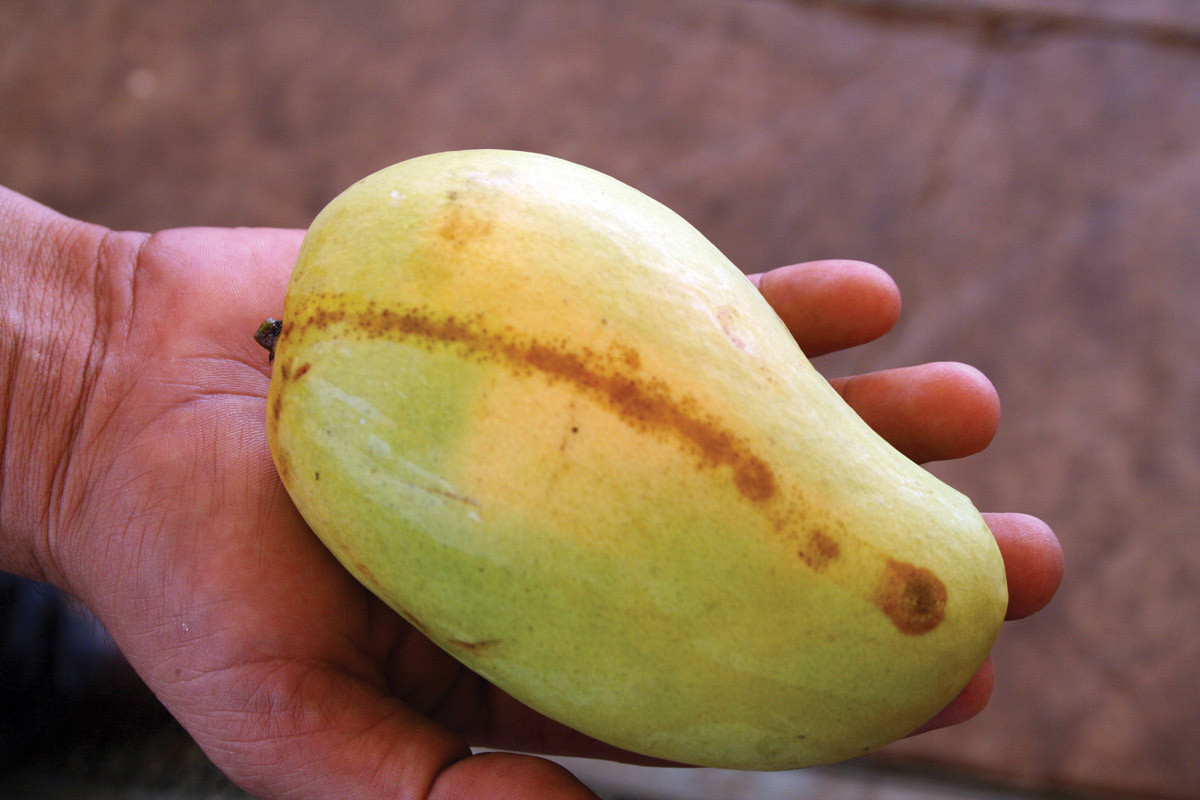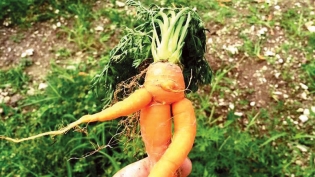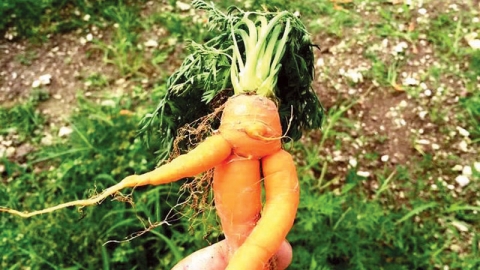The Pursuit of Imperfection
Every year, fruiting begins with the bloom. Sometimes it’s early and sometimes late, but there’s always the potential for perfection. At bloom, nothing has yet gone wrong with the fruit quality. It is without blemish, wind scar or aberration. The flower emerges with its – and the fruit’s – total potential intact: the perfect color, the perfect skin and the perfect flavor.
Then comes the rain and the wind. It will be too hot or too cold. There will be thrips and aphids, scales, mites and myriad flora of fungi and bacteria. Sometimes the tree lacks energy or stands in the way of an angry squall line or hungry herbivore. So many things to go wrong! But somehow one of the millions of flowers will set, grow and reach maturity. It will be perfect in every way, avoiding pests, finding shelter from the wind and rain – one in a million.
Flawless Fruits
The marketer, doing what humans will do, will take this superstar of peel and pulp and immortalize it in photograph and print for the consumer. The perfect fruit becomes the benchmark against which all others will be measured. Never mind that most will never attain this level of perfection. This will become the symbol of perfection, good flavor and value – we now judge the book by its cover. And, I too am guilty of these actions, photographing variety after variety, immortalizing only the perfect. All fruit that cannot attain perfection are labeled as substandard. They may excel in flavor, firmness and life after picking, but they are not “perfect.”
The scenario is human. But it’s not fair to the silent majority of fruit. It’s also not good business, nor in the best interest of the consumer. This practice prioritizes agricultural chemicals. Prices are driven up and growers go out of business – all because we chose a path of skin-deep beauty and ignorance.
As a fruit grower, I will always strive to grow the best. However, I am know the realities of the natural world. Horticulture is both art and science, a dance between the grower and the fruit tree, played out on the stage of nature.
Flavor, Not Appearance
If we take mango in South Florida as example, there will always be some rainfall at bloom, insect pressure at the time of fruit set and strong winds during the development of the fruit. The result is “cat-facing” and scarring of the fruit – not a disease that will render the fruit inedible, but simple scars and physical imperfections. These imperfect natural gifts will be delicious and nutritious regardless of a few scars. To achieve more “perfection,” I would be forced to spray, spray and spray some more. Sterilizing my orchard to protect my fruit against all perils will do little to improve the eating quality of my fruit.
Thus, my pursuit of imperfection puts me in tune with my environment and beliefs, and ultimately with the most appropriate, healthful and most flavorful mango that I can grow. I know that a branch rub will manifest into a most glorious and distinctive beauty mark that gives each individual fruit a context. These outer imperfections are only skin deep and take away nothing from the eating experience. The photograph of this mango needs no Photoshop, no manipulation to remove the distinction. I grew the fruit. I know it is the highest quality. These beauty marks tell me this fruit is real; it is not a construct by the hands of someone that knows nothing of the orchard.
In the real world of fruit and vegetables, there is no perfection. As consumers, we should embrace this. Buy your fruit and vegetables for the quality within, not just the cover. Uniformity of quality is an admirable goal, but as a consumer, one should have greater awareness. Seek out distinction, the kind that comes from a knowledge of nature and seasonality. Make your fruit and vegetable story one told through the experience of consuming the perfectly imperfect fruit. Direct the industry by using your consumer dollar to seek out regional distinction and inner quality.
The perfect fruit or vegetable is then by definition not perfect at all. It is quite to the contrary, it is perfection blossoming from imperfections. Be informed and celebrate in the untamed world of nature. Embrace the imperfect fruit.
The Campaign for Ugly Produce
When you shop in the farmers markets, you’ll find gnarly carrots and funky eggplants – all delicious. But major grocery stores are only now coming around to offering less-than-perfect produce. More than a quarter of all produce is thrown away before it arrives at the store because it doesn’t meet their standards for size, shape or color.
Anti-waste activist Jordan Figueiredo, launched the @UglyFruitandVeg campaign aimed at ending food waste. He reports some major chains in the U.S. are selling fruits and vegetables such as “Produce Misfits,” but few Florida grocery stores actively promote and sell ugly fruits and vegetables.
Figueiredo’s website, End Food Waste, makes it easy to advise supermarkets, including Publix and Target, that you want to see them stock ugly produce.







